“Moving House”
The Story behind the Painting
by Alvin Ong
The story of 3 affected graves at Bukit Brown not too long ago inspired a revival of family interest; Tan Yong Chuan (Blk 4, Div C), Tan Tiam Tee (Blk 3, Div B), Wee Geok Eng Neo (Blk 4, Div 6) were exhumed in May 2014. Old photos were unearthed from family albums, and heirloom objects from another era suddenly came to light. For the first time in decades, stories and narratives unlocked themselves from these objects and brought new layers of meaning to the notions of home and identity.
Tan Tiam Tee was the son of the magnate Tan Hoon Chiang (buried in Bukit China, Malacca), one of the founders of the Straits Steamship Co. His wife, Wee Geok Eng Neo, and his son, Tan Yong Chuan were all affected by the proposed highway.
(click on images for a bigger view)
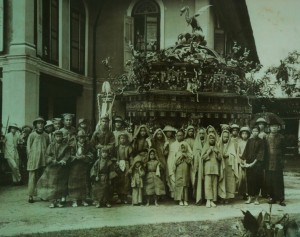
Funeral of Wee Geok Eng Neo, nee Mrs Tan Tiam Tee. Upper Thompson Rd, 1926. (photo courtesy of Alvin Ong)
Funeral of Tan Yong Chuan, died age 29, 26 November 1937, Neil Road. (photo courtesy of Alvin Ong)

Descendants at the tomb of Tan Tiam Tee, holding his portrait during Cheng Beng -tomb sweeping festival, 2012 (photo courtesy of Alvin Ong)

Descendants at the tomb of Tan Yong Chuan, Cheng Beng-tombsweeping festival , 2012 (photo courtesy of Alvin Ong
Miniature cooking pots were interred in Mrs Tan Tiam Tee’s tomb, presumably for her to cook in the afterlife, along with a pearl sanggul, and bracelets. According to my relatives, a set of gold teeth with an engraved heart shape was also found in Tan Yong Chuan’s tomb.
****
Tan Yong Chuan (son of Mr and Mrs Tan Tian Tee) was finally reunited with his wife for the first time in Holy Family Columbarium after 77 years. The columbarium has an unusual regulation that all photos of the deceased must be in color.
No color photographs of the deceased had existed at that time, so with the help of numerous correspondences, scans were digitally emailed, and the photos doctored and hand-painted.
Studying overseas has allowed the artist the space, physically and emotionally, to explore ideas of home and identity. These graves were only re-discovered shortly after the redevelopment plans were announced. The sight of the many abandoned tombs on the artist’s first visit to Bukit Brown had sparked questions about what happened to the descendants of the people who were interred there, which in turn, prompted the artist to explore if there were indeed any family connections to the cemetery at all. Beyond the historical and material significance of the place, it also felt like a site where mystery, the past, and present all came together. Reuniting with the tombs for the first time in many years became an emotional moment for some, and it also made us feel as though we have touched history, an experience that is becoming exceptionally rare in Singapore.
These were ideas that all came together in the painting, which were almost auto-biographical in that they featured vignettes of the artist’s experience with the discovery of the pioneers of Singapore and his roots. One random memory was a trek with Raymond Goh to Seah Eu Chin’s grave; One of the Teochew stone lions guarding the perimeter of the tomb eventually found its way into the picture. Raymond was featured in the early stages of the work, but in the end, this idea of displacement, loss and discovery surfaced in the final version titled, “Moving House”.
This is not the end of the road. There is yet another tomb whose story remains waiting to be told, my maternal great grandfather, Peck Mah Hoe, pictured here. The artist will be heading to the Peck clan temple in attempt to uncover more. And hopefully, there will be more paintings to come.
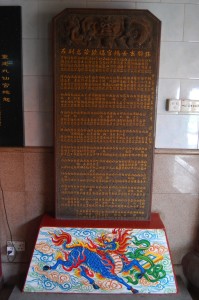
Stele in Peck clan temple with the name “Peck Mah Hoe” at the top, although the character for “Hoe” differs from the one on the tomb. Photo courtesy of Yik Han.
******
About the writer who is an artist :
Alvin Ong is reading fine art in Oxford, and did architecture at the National University of Singapore. In 2004, he was the youngest winner of the UOB painting of the year award at the age of 16. He had his first solo exhibition at 17, in the presence of His Excellency President S R Nathan.
by Raymond Ang
We visited Bukit Brown on a warm Saturday morning on June 7th , to find that the usual scene to the cemetery gates changed. There are now fences leading all the way to the gates. Clearly the construction for the highway has started.
I had brought my students from the Jakarta Nanyang School here to Bukit Brown to learn more about the links between Indonesia and Singapore. The students sweltered in the humidity. I had two groups and one group had lost their way. They had set off from Nanyang Girls’ High School and one of them took a wrong bus.
Beng from the heritage group for Bukit Brown arrived on his bicycle dressed in green cargo pants and wellies. He wore “the” plastic Casio digital watch – the one I wore growing up in Secondary school. He had jerry rigged a plastic bottle to act as a mud guard for the rear wheel of his bicycle. I knew I was going to like him already.
Just as Claire arrived in a taxi, the group that was lost called me on the phone. They were still trying to figure out where they are. Their teacher was from Jakarta too and didn’t know her way around. We decided to start the walk with the one group of students first.
Claire led the way and started to draw connections between the pioneers’ lives, history and culture in Singapore and Indonesia for the students. The tombstones started to mean more than just a random collection of stone, concrete and tiles. The Japanese attack and occupation of Singapore was a large theme – Mr Tay Koh Yat had fled to Batavia on the second last day of the fall of Singapore.
Mr Lee Kuan Yew had family ties in Indonesia. Though bothered by mosquitoes and the heat, the students trudged on. Beng brought out his insect repellant and sprayed the students down. I had told the students to bring some repellent yesterday, but I guess no one did.
We found out that the other group were on the other side of the hill – Mount Pleasant. Beng offered to go get them and dashed off on his bicycle. Claire drew the connections between saga seed and karats for diamonds; between colourful European tiles, Japanese innovation and adaptation and the Ming Chinese influence on Dutch kitchen tiles.
We visited Ong Sam Leong’s tomb and learned about fengshui and distinctive role of Sikhs in Singapore’s colonial history. This is the Nanyang style. One of my students asked me what would happen when the highway gets built. I replied that all this would disappear eventually – she didn’t seem to quite understand. “But it is interesting”, she said. “Yes I agree. I don’t think there is anything else quite like it in the world.” She frowns. “So it would all be gone?”. I nodded. It was sweltering hot. Some of the students were running low on water. Beng pulls out his canteen and starts topping up bottles. I feel very grateful and touched, but wasn’t sure how to express that. So I just smiled and made a mental note.
We ended the tour with a visit to Mr Tan Chor Nam’s tomb. It is simple and distinctively modern. A rectangular plot with a black rectangular headstone. No angels nor lions here. Herein lies one of the founders of Nanyang Girls’ High School. I asked the students to observe the differences between this tomb and the others we have visited in the morning – they could clearly see the difference. The principle of Nanyang Girls High (Singapore), Mdm Heng had told me once that Mr Tan Chor Nam had died a simple man – apparently he had dedicated a large part of his fortune in setting up the school. I tried to draw the connections between Nanyang Girls’ High School and the sister school in Jakarta, and asked the students to maybe think about how they would like to be remembered in the future.
For me Bukit Brown is a reminder that we stand on the shoulders of giants who have come before us, and shaped the environment in which we have grown and “become”. “What would your legacy be?” I asked? The students looked back at me without speaking. It was a serious question. Maybe too serious. I smiled and said, “alright, you don’t have to tell me. Just think about it.” I hope they do.
****
Raymond Ang, a Singaporean, is the Head of Experiential Education Centre at the JNY, the Jakarta Nanyang School. He requested a visit to Bukit Brown when his students were on a week long learning journey to Singapore. Brownies Claire Leow and Beng Tang, who stepped up to the plate, despite the late notice, were very impressed with how engaged the students were and their independence as they had to find their own way to Bukit Brown.
by Ang Yik Han
Born in Kulangsu Island off Amoy, Chua Chwee Oh came to Singapore at the age of 14. He studied till 17 or 18, after which he went into business. Beginning with trading between Singapore and Medan, he founded the firm Hock Heng in 1920 which had branches in Rangoon, Annam and other cities. It dealt mainly in local produce like dried fish and provisions. The biggest segment of his business was in French-controlled Annam, followed by British Malaya and the Dutch Indies. He was the second chairman of the Amoy Association (1940-1941) after its founding, and also a chairman of the Goh Loo Club.
Active in the China Relief Fund’s efforts in raising funds to support the Chinese forces against the Japanese, he was known for donating $100,000 single-handedly under his firm’s name. He also encouraged others to contribute by setting an example when the need arose. It must have been a bitter blow for him during the Japanese Occupation when he was forced to join the Hokkien section of the Overseas Chinese Association (OCA), the umbrella body set up by the Japanese to force the Chinese community to pay war reparations.
Chua Chwee Oh died in 1960 at the age of 64. His first wife Mdm Tan passed away at the young age of 32 and is buried together with him. His second wife was Mdm Ng. The place of origin inscribed on his tombstone is “Si Ming” (思明), another name for Amoy coined by Koxinga when the island was his base of operations against the encroaching Qing forces. This name evokes Koxinga’s longing for the glory days of the Han Chinese Emperors in the Ming Dynasty. Barred from use after the Qing Dynasty consolidated its control over all of China, this place name was revived after the Qing Dynasty was overthrown.
The tomb is at Hill 3, about 10m behind and to the left (facing uphill) of Tan Boo Liat’s tomb.
Tan Ean Teck (1902-1944)
According to “Biographies of Famous Personalities in the Nanyang,” Tan Ean Teck came to Singapore from Tong Ann, China at the age of 16. He worked for about four years in his brother’s (Tan Ean Kiam) company before striking out on his own, setting up his own rubber trading firm.
He was a strong supporter of the anti-Japanese war effort in China, and contributed to charitable causes in both China and other lands. He also contributed to the Hokkien Huay Kuan, the Chinese Chamber of Commerce, the Tong Ann District Guild, as well as many schools and social institutions,
But Tan Ean Teck’s life was tragically gunned down when he became a casualty of WW 2. On 19 April, 1944, the MPAJA (Malayan People’s Anti-Japanese Army) ambushed officials of the OCA ( Overseas Chinese Association) en route to visit the Chinese settlement of Endau in Johor.
A member of the OCA convoy, captures vividly what happened:
Tan Ean Teck’s body was taken back to Singapore and 4 days later on 23ed April , he was buried in Bukit Brown, close to his brother Tan Ean Kiam. He was 42 years old.
Prologue: Endau and World War II
In August 1943, in order to ease the food shortage problem in Singapore, the Japanese authorities mooted the idea of setting up new settlements outside Singapore and encouraging Singaporeans to relocate to these settlements to cultivate the land there. These settlements were planned to become self-sufficient in food supply. A settlement was created for Chinese settlers at Endau in Johore. (Source: Iinfopedia)
From Alex Tan Tiong Hee
My understanding, based on my late father’s (Tan Yeok Seong) account:
The OCA was not popular with the anti-Japanese elements that went underground to survive. Those living an open unconcealed life in public were natural targets for the Kempeitai who sought revenge against the Chinese, hence the pogrom.
The pacification of Japanese antagonism was the OCA’s raison d’etre and which had to be traded by the raising of $50million from the Chinese community as a gift for the Japanese emperor’s approaching birthday. This being done, the persecution or ‘sook ching’ then ended.
The communist terrorists were enterprising enough to merge with the anti-Japanese underground group to form the MPAJA. They accused the OCA as collaborators and monitored the Endau Project. Their opportunity came when they ambushed and fired at a convoy killing all except Lee Choon Seng who was Vice President of the OCA.
Extract from Collaboration during the Japanese Occupation : Issues and Problems focusing on the Chinese Community by Han Ming Guang (Hons thesis for history):
Even though Endau was administered by the Chinese, the fact that it was sponsored by the Japanese military and established by the O.C.A whom the MPAJA saw as an organisation of collaborators, meant that the Chinese administrators that administered the settlement were now targets for the MPAJA guerrillas. The MPAJA guerrillas ambushed the O.C.A officials that were on their way to visit Endau and in the process wounded Mr Lee Choon Seng, the chairman of the Overseas Banking Corporation. They also managed to kill Mr Wong Tatt Seng, who was in-charge of maintaining peace and order within the settlement, along with other Chinese administrators who were also living in Endau at the time of the attacks.
While it was clear that the MPAJA viewed the members of the O.C.A as well as the Chinese leaders of Endau as collaborators and traitors, in general the people who were living in Endau did not share those views. They understood that the Endau plan was conceived by the O.C.A and Mamoru Shinozaki in order to save Chinese lives from the dreaded Kempeitai , by giving the Chinese community a piece of land in Johore, for them to live separately and free from the Japanese military.
Pat Lin on life in Endau:
According to my parents, Maggie Lim and Lim Hong Bee (H.B. Lim) both of whom were actively involved with the MPAJA in the Endau settlement (Yes, I was there too) there were people in the OCA who were what we may today call double agents. They included some very prominent local people who on the surface professed to be anti-Japanese, but who were informers who were usually rewarded by the Japanese.
As with the French resistance, it was a very difficult time as people all lived under a climate of uncertainty as to who was about to betray them to the Japanese. My mother also had her suspicions as to those who carried out the covert assassination of informers.
She has a vivid story of having to deal with someone who was brought into the Endau clinic (she was the Endau doctor) one evening with a bullet in his head. As a physician she was duty bound to do everything to save him. She was filled with the reluctance to do anything as it was known by the Endau leadership that he fed information to the Japanese that led to people being taken away for execution or disappearing suddenly. Possession of any sort of weapons was punishable by death, but people like my father possessed hand guns that they somehow received from some source and were very carefully hidden.
Endau was located in healthier environs and there were more people who managed to make a go of farming. The staples were kangkong and ubi kayu. My little family brought chickens up from Singapore piled up In chicken coops on top of a lorry. Some of them ran off into the jungle, and others fell prey to wild animals. Wild animals including roaming tigers were a real threat.
The first year in Endau and Bahau were particularly bad before the first harvests. OCA members from Singapore would make periodic visits with whatever they could scrounge up including medicines. Some within the community tried being entrepreneurial by trying to sell black market food stuffs they somehow managed to obtain. Mom recalled being so hungry from having to work and nurse me but my father being ever the man of high ethical standards refused to allow the purchasing of black market goods.
An Epilogue on a Life Miraculously Saved
The metal badge of the OSA worn on the chest, deflected the bullet that could have fatally wounded the Vice President of the OSA, Lee Choon Seng. He believed he was saved for a reason and his life took on a spiritual quest in the aftermath of war. Lee Choon Seng subsequently founded the Poh Ern Shih to dedicate merits to people killed during the occupation. His grandson transfromed the monastery into Singapore’s first green temple.
***********
Editor’s Acknowledgement : This blog post is a compilation of first hand accounts and research from the Heritage Singapore Bukit Brown Facebook Community.
by Ang Yik Han
Cheok Hak Leng (石学能) died in 1929 at the age of 34. His father was a rice merchant and he studied in Chong Cheng School. After leaving school, he founded Seng Cheong Sawmill with two other partners. He was the firm’s general manager.
It was mentioned in an account of his life that he joined the Tong Meng Hui in Singapore (Lim Nee Soon’s list of Tongmenghui members does not include his name, unless he joined under a pseudonym). Given that the Chinese Revolution took place in 1911 when he was only 16, he would have been a very young member.
On his tomb, a pair of couplets.
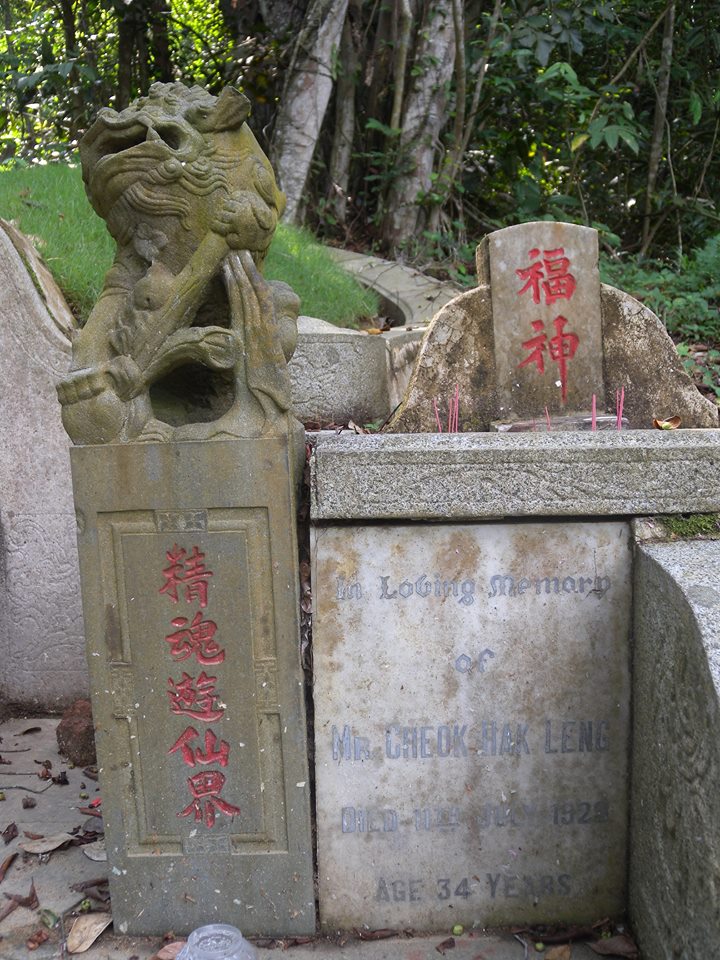
精魂游仙界 (photo Yik Han)
精魂游仙界
The immortal spirit wanders about the heavenly realms
金尸埋俗尘
The corporeal body lies buried in the mortal world
A footnote:
8 December 2012
Straits Time: Life!
Meaningful to find ancestors’ tombs
Melissa Sim’s article Finders Of Long- forgotten Tombs (Sunday Life!, Dec 2) was unique and interesting.
I had long wanted to find the tomb of my grandfather, who died in 1929 and was buried at the Bukit Brown cemetery. When the Land Transport Authority announced its plans last year to build a highway that will cut through the cemetery, my interest was reignited.
Armed with a copy of the register of burials from the National Archives, I made my way to the cemetery full of hope of locating my grandfather’s grave. How wrong I was. Bukit Brown is a massive place with no proper signs and directions, making it difficult to find ancestors’ tombstones.
It was during my second trip there in January this year, after a futile attempt the previous month, that I discovered not only my grandfather’s tomb but also those of his two brothers adjacent to his.
All this was made possible through the assistance of Mr Raymond Goh, who was featured in Ms Sim’s article.
Mr Goh said: “This is my country, it’s worth fighting for because my ancestors are here.” I echo that statement.
Bennie Cheok
—————————-
NB: Bernie Cheok is a grandson of Cheok Hak Leng
(The tomb is at Hill 3, up the track after Tan Chor Lam’s grave)
by Ang Yik Han
The tomb of 白心正 (probably Pek Sim Jia in romanised Hokkien) at Hill 3. Hailing from Anxi (安溪 – An-khoe) county of Fujian, he was the proprietor of Pek Sam Choon (白三春) – a tea importer who was one of the founding members of the Singapore Chinese Tea Importers and Exporters’ Association in 1928.
No longer in operation today, the firm was known to still exist in the 1950s when it was run by one of his sons, Thiam Hock, whose name appears on his tombstone. As Anxi county is famed for producing tea especially Ti Kuan Yin (铁观音), a sizable proportion of local Chinese tea merchants hail from that county. Some old firms founded before the war are still around today.
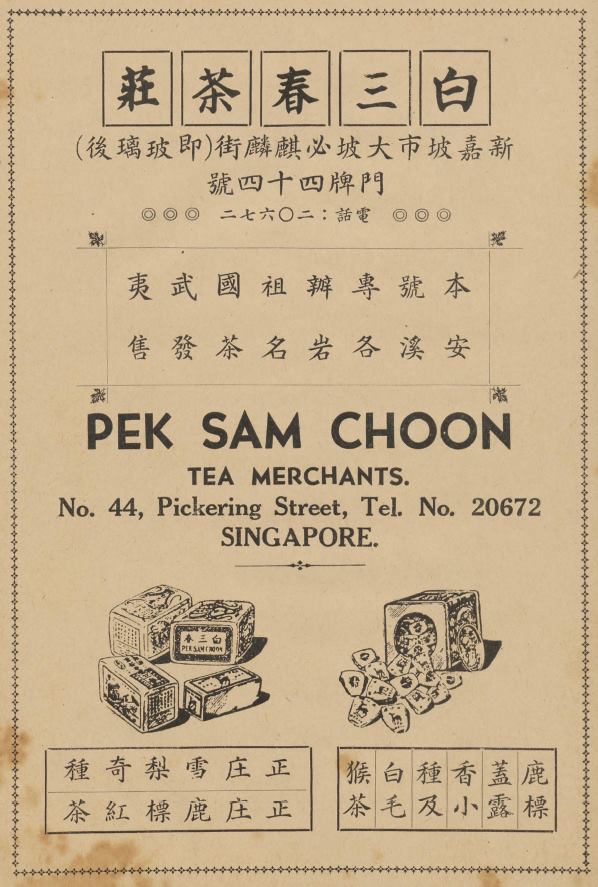
Advertisement for Pek Sam Choon in the 30th anniversary commemorative publication of Singapore Ann Kway Association 1952
Date: Saturday, 7 June’14, 2 pm – 4 pm
“As part of Post-Museum’s participation in the group exhibition Unearthed, Woon Tien Wei will speak about our efforts regarding Bukit Brown, as well as our artwork on show (The Bukit Brown Index).
Peter Chen will also be speaking at the same session, on his photography work about Bukit Brown and Tanjong Pagar Railway Station.
The talk is free and will be held in the Glass Hall at the Singapore Art Museum.
Please register with Singapore Art Museum at http://www.eventbrite.sg/
About the exhibition :
Post-Museum will be exhibiting 8 works from The Bukit Brown Index in Unearthed.
Mar 21 – 6 Jul : 10am – 7 pm
Unearthed seeks to investigate our relationship with Earth and the natural world, and charts SAM’s ( Singappore Art Museum) new direction in encompassing and presenting projects and practices where art intersects with other disciplines and modalities. Drawing on works from SAM’s permanent collection as well as private collections, the exhibition at SAM offers an insight on how artists in Singapore view and respond to the natural world, coming from and living in such an urban and built-up environment.
The other artists who are in the exhibition include Lucy Davis, Debbie Ding, Ho Tzu Nyen, Donna Ong, Ezzam Rahman, Robert Zhao Renhui, and Twardzik Ching Chor Leng.
[Image: Installation view of Bukit Brown Index #98: List of Names of the Deceased to be Exhumed to Make Way for the New 8-Lane Road through Bukit Brown and Seh Ong Cemeteries (Unclaimed Tombs as of 1 March 2013) Handwritten by Members of the Public]
The Straits Times published a letter from the Singapore Heritage Society and All Things Bukit Brown 15th May, 2014 in response to an ed-op piece ” Can Civic Society Influence Policies on 12th May. The edited letter is available here
We reproduce the original and highlight key parts which were edited :
We refer to the article by Assistant Political Editor Leonard Lim claiming that civil society groups “extracted concessions on Bukit Brown cemetery” in his opinion piece, “Can Civil Society Influence Politics?” (ST, May 12, 2014).
As key players of the civil movement trying to protect and preserve Bukit Brown, we are unclear as to what “concessions” Mr. Lim is referring. It is now a well-established narrative that officially in 2012 when the road was announced, the decision to build a highway through Bukit Brown had already been made. We state for the record we were present at a briefing by the Ministry of National Development but that there was no consultation or protracted engagement thereafter to extract any concessions. We issued a call for a moratorium and moved on.
Mr. Lim references a subsequent decrease in the number of graves planned for exhumation for the 8-lane road across Bukit Brown from an estimated 5,000 as part of a compromise reached with civil society. This is not the case.
There are two points to clarify to prevent this misstatement of facts from being (repeatedly) perpetuated. One, the number of graves finally affected was reduced not to 3,764 as stated in Lim’s article, but to 4,153. The error occurred because Mr. Lim quoted from a Land Transport Authority (LTA) announcement in a March 19, 2012 statement on the realignment of the road. It was in an August 5, 2013 statement by Urban Redevelopment Authority (URA) and LTA to announce the award of the contract for the road that the final tally of affected graves was issued. Two, both statements clearly attributed the realignment of road to an engineering decision, and the drop in the number of graves affected had nothing to do with consultations with civil society.
On the second point, we draw attention to the LTA statement that announced that the road design includes a bridge over several creeks in Bukit Brown rather than a design that will see a filling up of these natural drainage networks with soil. There was no consultation on the original design or its changes. It is not clear if the adjustment was a result of a yet-undisclosed, but limited-scope Biodiversity Impact Assessment that the LTA conducted in early 2012. Regardless of the reason, that this change in design has been reported several times in your newspaper to be a result of a “compromise” with civil society is erroneous and needs to be corrected so as not to be repeated.
To date, there is likewise no consultation about the zoning of the greater Bukit Brown area in its entirety for residential use in the 2013 Draft Land Use Master Plan released by the URA. This area includes the larger cemetery complex comprising Bukit Brown, Seh Ong, Lau Sua, and Kopi Sua.
Now that we have clarified the events of 2012 and the decisions announced thereafter on official record, we would like to focus on the present and note that we have been meeting with the National Heritage Board since mid-2013 and hope to make more progress in protecting Bukit Brown. We write to clear the air so discussions are based on facts, not misrepresentations, and the public is not misled.
Signed:
Chua Ai Lin (Dr) President, Singapore Heritage Society, Claire Leow (Ms) co founder, All Things Bukit Brown
****
The original article reproduced here for reference, highlighted paras on Bukit Brown :
ST Opinion, May 12, 2014
Can civic society influence policies?
By Leonard Lim, Assistant Political Editor
THE large, spreading banyan tree once had such a thick canopy that little sunlight could filter through, hindering the flourishing of any plants below.
But, to borrow this metaphor of the State made famous by former minister George Yeo in 1991, it has been pruned somewhat in the past couple of years.
Consultation and engagement have become the buzzwords of government policymaking in a changed political landscape, with a more well-educated, well-travelled populace becoming more assertive and vocal.
There may be no better time for civil society – the wide spectrum of organisations operating outside the government and business sectors – to test this pledge to listen more, and in the process carve out a more influential role for itself.
They can take heart from the naming of Mr Tan Chuan-Jin last year as the Government’s unofficial point person for engaging with non-governmental organisations (NGOs). Mr Tan is Manpower Minister and a member of the fourth-generation leadership.
In 2012, Law and Foreign Minister K. Shanmugam met gay activists to discuss matters such as discrimination and the anti-gay sex law Section 377A.
The State’s engagement with other interest groups on animal rights, heritage and conservation as well as environmental awareness has also increased.
Civil society has scored significant victories recently as well, influencing legislation and government policy.
Since the start of last year, foreign maids – either with a new work permit or a renewed one – have been entitled to a day off every week, or must be paid a day’s wages in lieu.
As contracts last two years, all maids will, by next January, be on new contracts that have to abide by the rule. The change came about after a decade of lobbying from groups championing the rights of migrant workers.
Laws on sexual crimes have also been repealed.
It started in late 2011, after an article highlighting a little-known section of the Evidence Act was put up on website publichouse.sg. The Act allowed a man charged with rape to discredit the victim by digging into her sexual history, and showing she is of generally immoral character.
Mr Andrew Loh, who runs the site, circulated the post to several ministries to get a response.
He received a call from the Law Ministry suggesting a meeting, but turned it down as he felt the Association of Women for Action and Research (Aware) was the expert on the topic.
Mr Shanmugam eventually met representatives from the women’s rights advocacy group and later started the process of amending the Act.
Nature lovers, who in 2001 succeeded in getting the reclamation plans for the Chek Jawa wetlands area shelved, also extracted concessions on Bukit Brown cemetery recently.
Several nature and heritage groups opposed the construction of a road that would slice through the historic graveyard.
It is the largest Chinese cemetery outside China, and among the thousands of graves are those of philanthropist Gan Eng Seng and Lee Hoon Leong, grandfather of founding prime minister Lee Kuan Yew.
After months of engagement, a compromise was reached and the authorities changed the road’s design so that the number of graves exhumed fell from 5,000 to 3,746.
But there are also many examples where civil society’s push for change was not successful.
Earlier this year, several activists took issue with the Government’s tabling of proposed legislation to keep the peace in Little India following last December’s riot.
They argued that the parliamentary Bill placed too much focus on alcohol as the cause of the riot, and this might influence a Committee of Inquiry’s deliberations.
Several non-partisan Nominated MPs criticised aspects of it. But it was passed, with the Government explaining that the new laws would give the police powers in the neighbourhood for a year until longer-term measures could be enacted.
Other recent civil society proposals that were rebuffed include calls to introduce a poverty line to reduce income inequality, and the withdrawal of licensing regulations of news websites, which some saw as onerous and curbing free expression.
But groups can take heart that “the Government has and will continue to engage civil society as an essential partner in dealing with the important issues that face Singapore”, as Mr Shanmugam’s press secretary wrote in a letter to The Straits Times Forum page last November.
Still, even as the political leadership indicates a greater willingness to engage, there is always the lingering question mark over whether a civil society group’s actions or statements are deemed to have crossed into the political arena, thus risking censure from the Government.
This longstanding stance of politics and political comment belonging only in the realm of party politics can be traced back to the fledgling days of the People’s Action Party.
In the 1960s and 1970s, leftists used trade unions and cultural groups to garner support against the party.
A recent incident involved activist Nizam Ismail.
In April last year, the lawyer was accused by the Government of using the Association of Muslim Professionals (AMP) as a platform for pursuing partisan and racial politics, a claim which he denied.
He resigned from his AMP leadership positions, saying he was told the Government had taken issue with his online comments and participation in political events that he said he did in his “personal capacity”.
In the wake of the furore, Mr Lawrence Wong, Minister for Culture, Community and Youth, said in May last year that the Government welcomes feedback on policies even if they may be critical, as this helps improve public policy for the benefit of all Singaporeans.
But NGOs “should not be used as a cloak for partisan political objectives”, he stressed.
“Similarly, while individuals in the NGOs are free to express their views, they should not use their organisations to pursue a partisan political agenda,” he added.
The goals of civil society in wanting social transformation, however, mean these limits will inadvertently be tested on occasion.
Still, if the saplings under the banyan tree are to take root and thrive, much will depend on how willing Singapore’s civil society is to push the boundaries and extend its reach in this new landscape.
limze@sph.com.sg
By Perry Tan, Standard Chartered Bank
On a misty Saturday morning, 33 volunteers from Standard Chartered Bank congregated at a most unlikely venue – Bukit Brown Cemetery.
This is no ordinary cemetery. Home to 100,000 tombs, Bukit Brown which opened in 1922 as a municipal cemetery is part of a complex of older adjoining clan cemeteries. The complex is the biggest outside of China. Its historical significance is substantial, and include tombs that date back to the last days of the Qing dynasty from the 1840s which were relocated from private burial grounds and clan cemeteries which had to make way for development. Bukit Brown is listed on the World Monuments Watch list 2014 as a heritage site threatened by the development of an 8 lane highway.
Armed with water bottles, shovels, saws, garden shears and other equipment, we were ready to explore the cemetery and clean up some of the tombs.
We were joined by seven Brownies, veteran citizen volunteers who dedicate their time and expertise to preserving Bukit Brown. The Brownies were our tour guides and provided cleaning work supervision, while we played tourists before offering our helping hands in tomb cleaning.
We started with the Brownies taking us on a walking tour that educated us on the history, culture, and heritage of the cemetery, as well as the rich stories of the men and women who were laid to rest. Bukit Brown is the final resting place for many famous pioneers of Singapore. We walked through the dirt tracks, stopped by prominent tombs and listened to numerous stories of many pioneers of Singapore – educators, scholars, doctors, businessmen, bankers, philanthropists, and the common men who built up the city state during its early days. Many of the names, like Chew Joo Chiat, Chew Boon Lay and Gan Eng Seng, were names that were not unfamiliar to us.
Next, we literally rolled up our sleeves and split into groups. Supervised by the Brownies, we proceeded to clean up several tombs that had been covered with vegetation, roots and dirt, restoring dignity to the pioneers resting below. We pulled weeds and shrubs, chopped at overgrown roots and dangling branches, scraped and removed algae, swept away fallen leaves, and wiped grime off the tomb stones. It was a good solid three hours of sweaty and grubby hard work, but the sense of satisfaction was immeasurable when we inspected our handiwork at the end of the session, knowing that we made a contribution towards the preservation of a heritage site of such significance.
The day culminated in a finale where we trekked to the magnificent tomb of Ong Sam Leong, where we were treated to a top-of-a-hill view and stories of the biggest tomb in Bukit Brown.
At the end of the day, we shook hands to express mutual appreciation with the Brownies. Something tells us that this would not be the last community activity at Bukit Brown as several volunteers have expressed their desire to be back for more.
***
The Standard Chartered Clean-up took place on Saturday 26 April 2014
by
Cherlyn Lee Suet Yean
I am a Junior College student who loves history and writing poetry. To me, history is a grand story with so many interesting details waiting to be discovered. In my free time, I love taking long walks around Singapore, letting my feet absorb the atmosphere of different places. I learn so much about Singapore’s history that way.
Naturally, I am interested in Bukit Brown because it is full of history. In fact, I went there earlier this year. But amidst all the tombstones, there was one that held a special resonance for me—the tombstone of Khoo Seok Wan. He was a poet and a scholar, and his life story is particularly fascinating because it contains all the vicissitudes of life.
I became interested in visiting Khoo’s tombstone after I attended an excellent exhibition on him at the National Library. He was born rich but became poor, and died of leprosy. But what really struck me was the beauty and immediacy of his poems, written in classical Chinese style. He is refreshingly honest about his poverty, and his poems chronicle details of his daily life very poignantly.
I suppose I was also was able to identify because I write poetry. I enjoy writing poetry because I get to express myself, and it is a way to channel my emotions. So I decided to visit Khoo’s grave as a pilgrimage to seek inspiration, and to pay homage to a great poet.
For me, the poem of his that I loved most was “Reflections on Building my Grave”. It is by an immigrant who has reconciled himself to the fact that there is no return to the motherland, and his characteristic honesty (with himself) can be seen. He also reconciles himself to inevitable change, and the line “年年新綠到天南“, as much as it describes how grass will grow yearly around his grave, is a statement that accepts change. This is particularly fitting given the change that is happening now, with a road being constructed through Bukit Brown.
In fact, I recited this poem by his tombstone because it felt right to do so, like completing life’s cycle. In his acceptance of dying in a foreign land that has become home, there is perhaps a larger acceptance of change. Given that the highway will be constructed through his tomb, it is perhaps a way of sending him to his final rest. And this is fitting because of the way he stoically endured through the vicissitudes of life with courage and dignity.
This is my tribute to Khoo Seok Wan:
Visiting Khoo Seok Wan’s Grave
As I enter, a tripod covered with verdigris promises
That if I pause long enough, its invisible
Camera will capture me against a hill of tombs.
This afterimage will bewilder passing cars.
At Khoo’s burial mound I recite
“Reflections on building my grave”.
Translated, its crow-squawked syllables
Hover in the somnolent air. A creased map
Guided me here, amid the river of red
Inscriptions I cannot read.
The highway blueprint that sent in
An army of excavators must have been
A summons from the dead. Otherwise I
Would not have come to you
With a broom and a book of your poems.
“Reflections on Building my Grave” by Khoo Seok Wan
(translated by Shelly Bryant from the NLB exhibition)
in sea and on hills
little space even for my abode
how then may these buried bones
leap over the Sword Pond
even were you to call a third time
I will have no hope of rising
from Singapura’s soil [Xing zhou]
when I fall, at last, into repose
a petal brushes my headstone –
another butterfly repeats life’s circle
yet even in these grave markers
styles alter with time
like grass growing anew
in its season
with each passing year
changes again touch
our southern home
Editor’s note: Khoo Seok Wan was exhumed on 12 March 2014, with his grandson and his great grandsons in attendance.

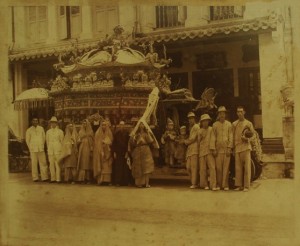
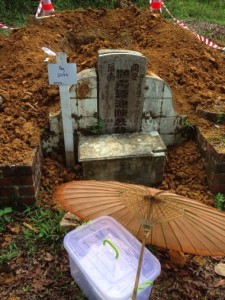
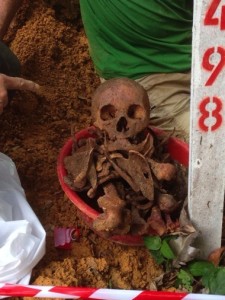
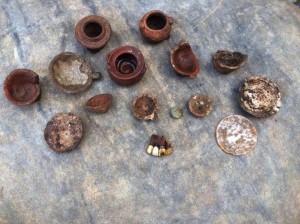

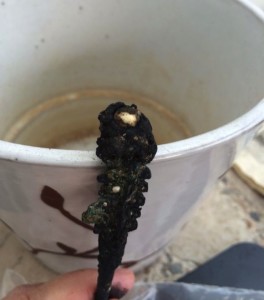
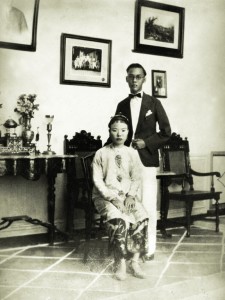
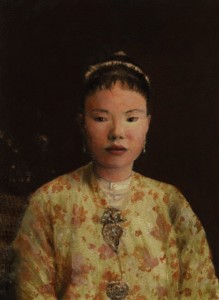


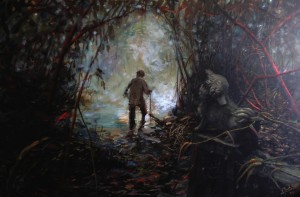
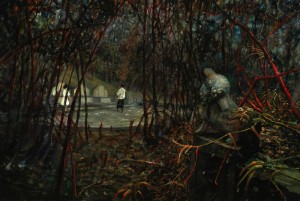



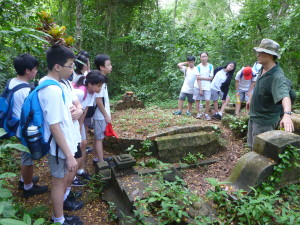
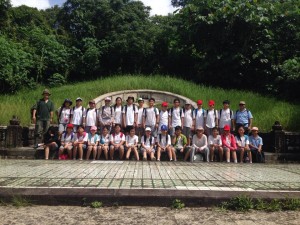
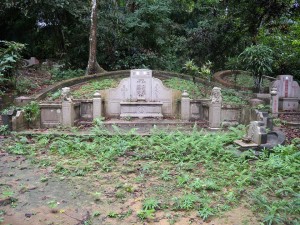
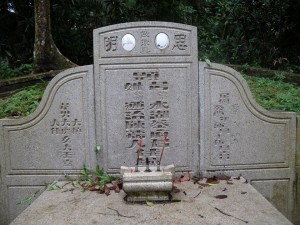
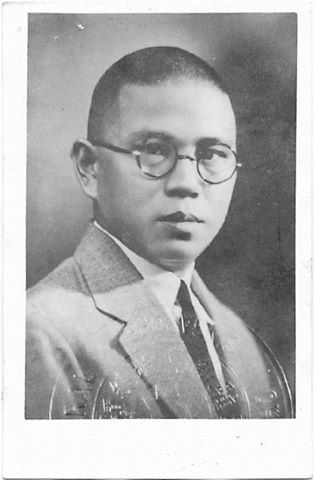
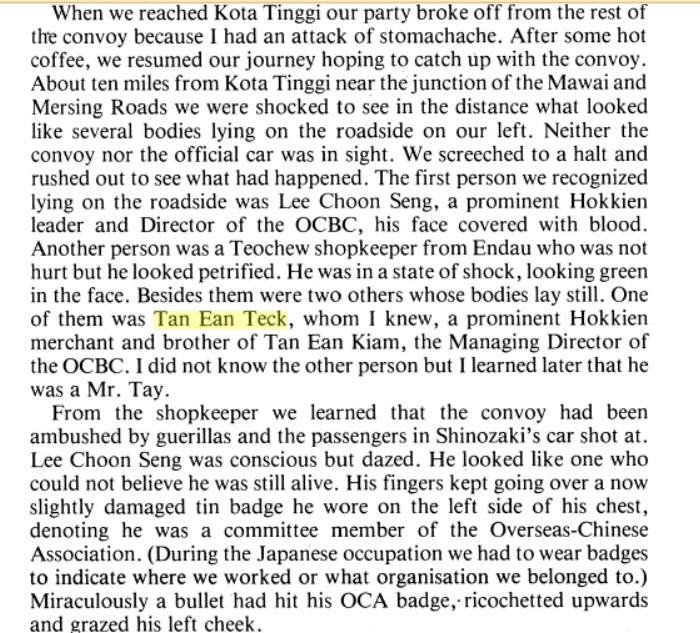


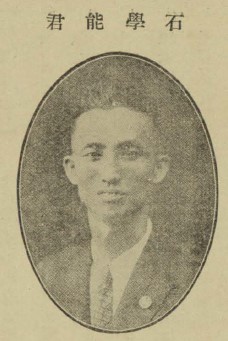



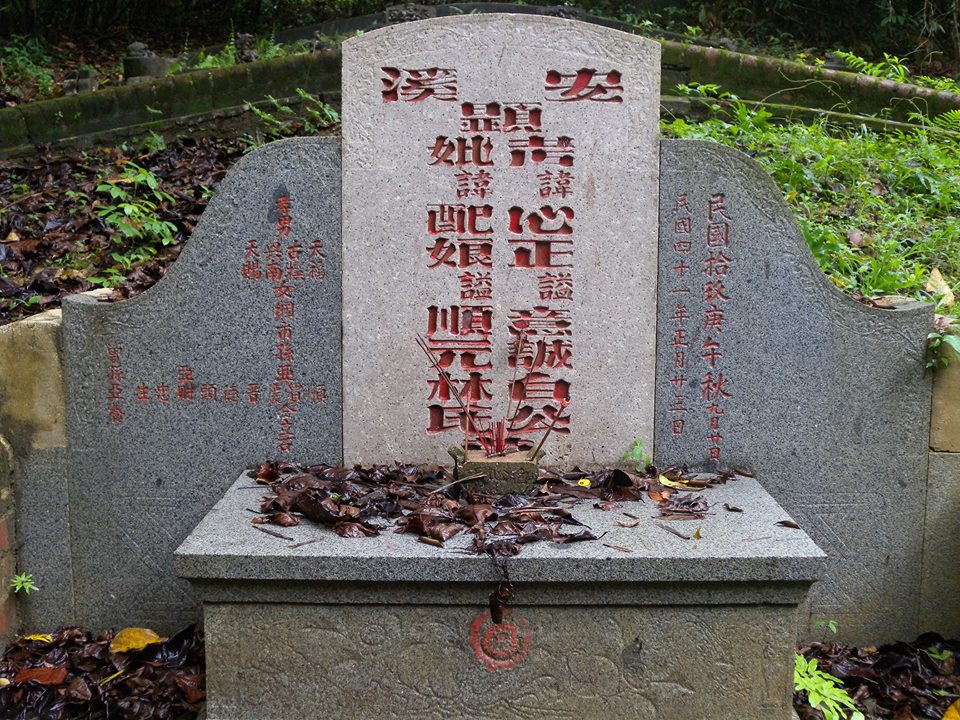
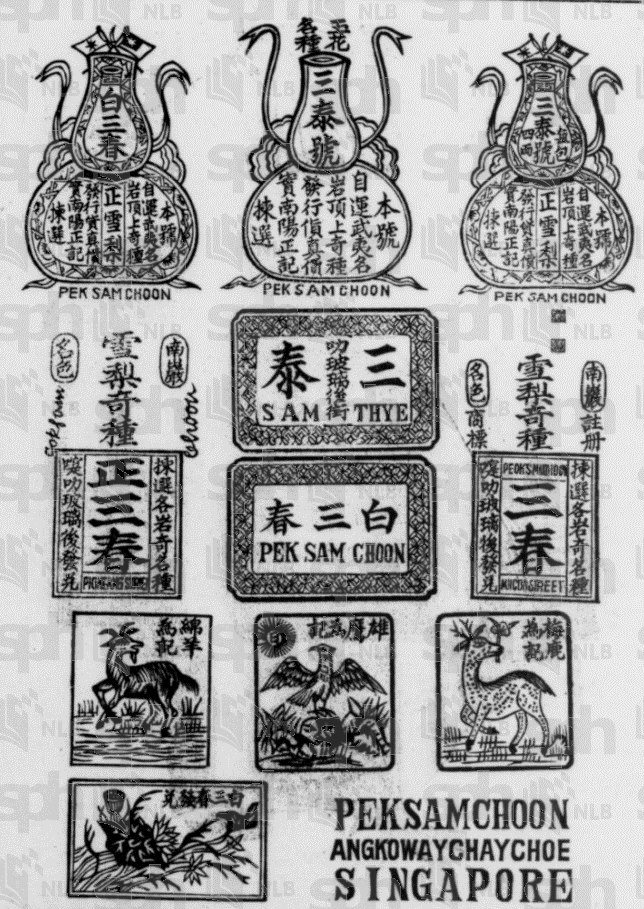
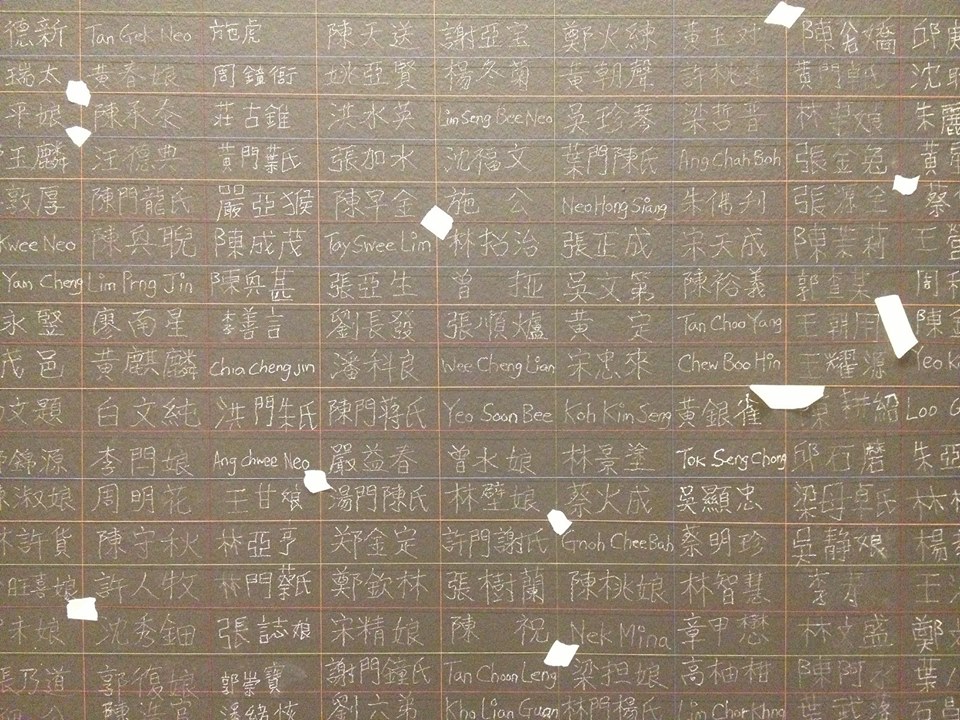

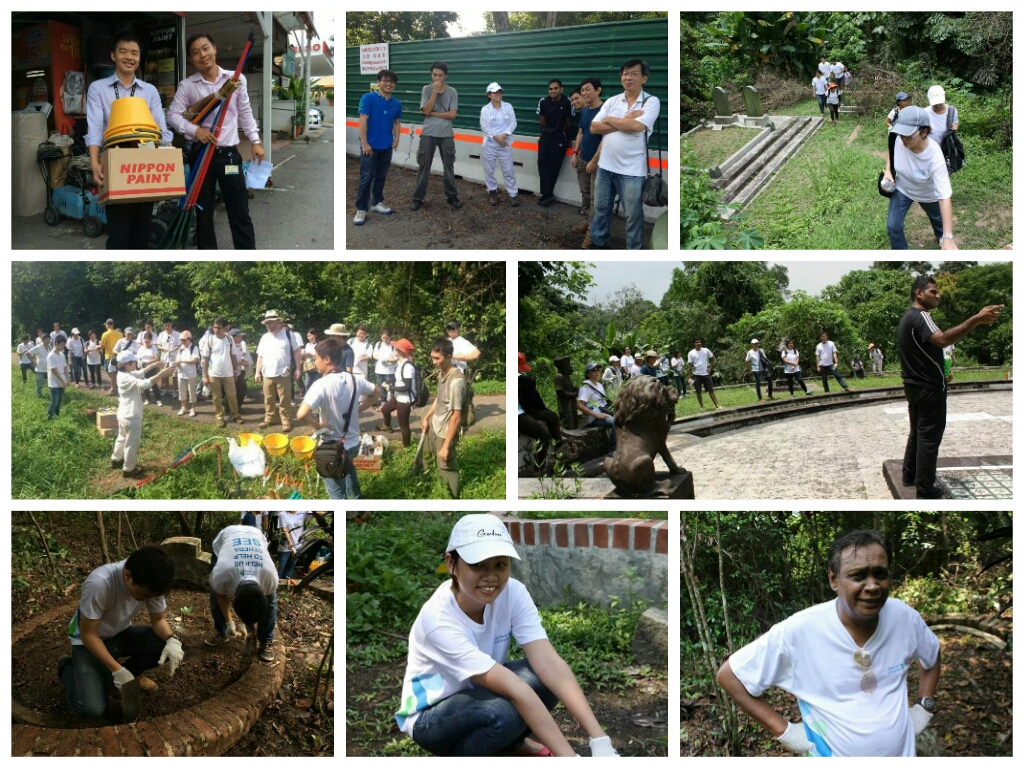

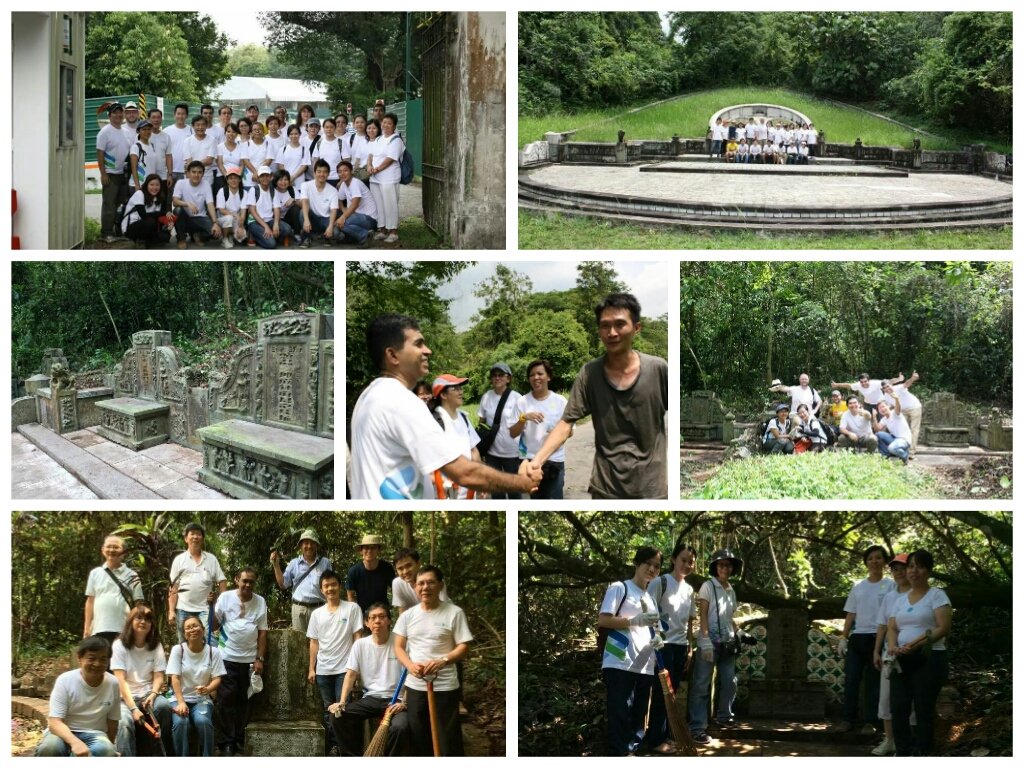



Recent Comments